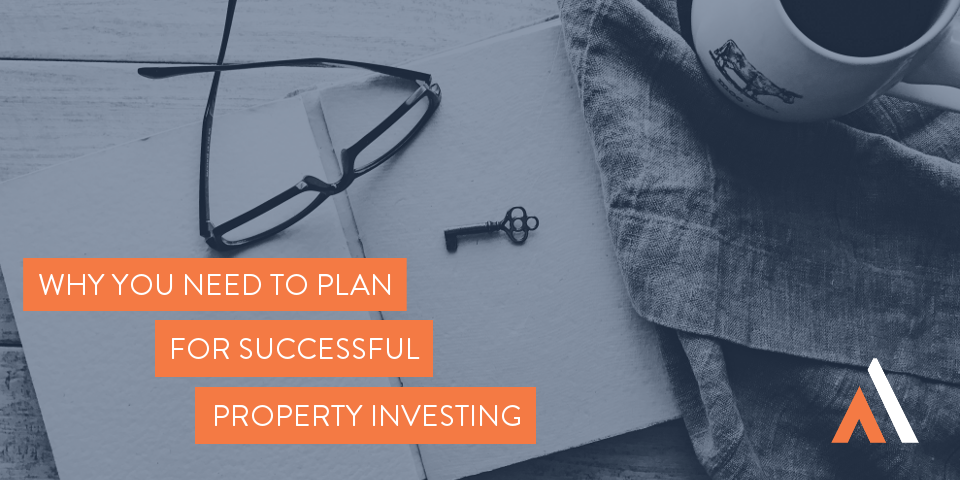
Why you need to plan for successful property investing
June 30, 2018 - Blog
After a period of strong price growth like the one that Sydney has recently experienced, many people mistakenly believe that successful property investing is easy.
Sure, a lot of people have experienced price growth, but many are owner-occupiers who will ultimately have to buy and sell in the same market at some point in time, therefore they never really see the financial gains that they have tied up in their home.
What I mean by that is that while their home might now be valued at say, $1.5 million, if they were to sell and buy somewhere else in Sydney, they would need to spend a similar figure (or more because more people upgrade rather than downgrade) to secure their next property.
Smart investors, on the other hand, understand the benefits of leveraging the equity that they have built up, meaning they can potentially use the increase in value of their portfolio to buy additional properties.
The power of leverage
Sophisticated investors don’t consider the market as a game of chance or speculation.
Rather they have a plan or blueprint to guide them on their journey to financial security through property investing.
That plan involves the development of a property strategy to understand their lifestyle and financial goals as well as determining their preferred investment and property acquisition strategy.
And that strategy involves using leverage to continue to grow their portfolio over time.
Let’s consider someone who had $200,000 in either cash savings or accessible equity within an investment property or their own home.
If that money just stayed put and it grew in value by about five per cent per annum, for example, this would mean it would increase by $10,000.
However, savvy investors understand that if they used, or leveraged, those funds as a 20 per cent deposit to buy a $1 million property in a high demand area like Neutral Bay or Manly, the return could be significantly higher.
In fact, using a five per cent return again, the capital growth on $1 million would be $50,000 in one year – which is five times the return of $10,000.
Their original investment of $200,000 has grown to $250,000 in just one year, which is a return on investment of 25 per cent! This is the power of leverage and cash-on-cash returns.
We can then look beyond the first year and see what happens over the long-term when the annual return is compounded year after year:
| Example 1 | Savings | Example 2 | Property | ||
| (5% return) | Balance | (5% return) | Balance | ||
| Today | $200,000 | $1,000,000 | |||
| Year 1 | $10,000 | $210,000 | $50,000 | $1,050,000 | |
| Year 2 | $10,500 | $220,500 | $52,500 | $1,102,500 | |
| Year 3 | $11,025 | $231,525 | $55,125 | $1,157,625 | |
| Year 4 | $11,576 | $243,101 | $57,881 | $1,215,506 | |
| Year 5 | $12,155 | $255,256 | $60,775 | $1,276,282 | |
| Year 6 | $12,763 | $268,019 | $63,814 | $1,340,096 | |
| Year 7 | $13,401 | $281,420 | $67,005 | $1,407,100 | |
| Year 8 | $14,071 | $295,491 | $70,355 | $1,477,455 | |
| Year 9 | $14,775 | $310,266 | $73,873 | $1,551,328 | |
| Year 10 | $15,513 | $325,779 | $77,566 | $1,628,895 | |
| Year 11 | $16,289 | $342,068 | $81,445 | $1,710,339 | |
| Year 12 | $17,103 | $359,171 | $85,517 | $1,795,856 | |
| Year 13 | $17,959 | $377,130 | $89,793 | $1,885,649 | |
| Year 14 | $18,856 | $395,986 | $94,282 | $1,979,932 | |
| Year 15 | $19,799 | $415,786 | $98,997 | $2,078,928 | |
| Cash-on-cash Return | $215,786 | $1,078,928 |
When comparing the growth of the two examples you can see the real power of leverage used in Example 2.
The growth over 15 years on $200,000 in savings is around $215,000, but the growth on $200,000 leveraged into property is over $1 million!
While interest repayments on the $800,000 loan will need to be paid, rent from the property investment helps to offset this.
As part of their property investing strategy, smart investors also take a long-term mindset, which means that the returns on that original amount should continue to grow year after year because of the power of compounding.
Is financial freedom a realistic goal?
We hear a lot of about “financial freedom” in the property world, but what is it and is it achievable?
“Financial freedom is achieved when your passive income is greater than all of your expenses after tax.”
Passive income comes from investments, such as rent from properties, but you don’t physically have to work for that money.
Plus, it grows exponentially over time, which means it will cover more of your debt repayments on your property loans for example.
Income earned from a salary, however, will likely never increase at the same rate as it is usually linear and mostly only increases in-line with inflation or a promotion.
What I mean is that income from your job will probably never result in financial freedom, unless you use it to invest in capital growth assets.
The vast majority of Australians rely on the pension in their retirement because of this – even after superannuation is taken into account.
What’s equally depressing is that many Australians might actually outlive their money in their twilight years, due to the increase in life expectancy.
Imagine working hard all your life and then pretty much living in poverty during retirement?
That doesn’t have to be your story, though, if you’re prepared to take action today.
Superannuation or property investing?
Instead of just making voluntary contributions into super and hoping for the best, smart investors leverage into investments like property outside of super that can build their asset base as well as passive income later in life.
They do this because they understand that their money can work harder for them than just earning five to 10 per cent every year within super.
Property investing is a proven wealth creation strategy, which has the potential to create a significantly higher income stream in retirement than super alone.
Plus, it can provide a passive income earlier in life which means you could retire sooner if you so wish.
Of course, it’s important that you assess which strategy is right for you by seeking advice from a licensed financial planner and a property investment advisor.
Superannuation should still provide a cornerstone of building wealth but used in conjunction with investing in other direct assets, which also provides a level of diversification.
At the end of the day, Australia’s ageing and growing population means that the Federal Government’s ability to keep financing the pension is becoming strained.
In the years ahead, that may mean higher taxes for all Australians, which would further reduce their chances of saving for the future.
No one ever saved their way to financial success or freedom.
What they did was create a strategy and a plan to achieve it via investing in income-producing assets that do the heavy lifting for them.
If you want to get started with property investing or have an established portfolio already, STRAND Property Group can help you take the next step in building a more financially secure future.
As experienced property investors ourselves, we have the industry knowledge and tools available to assist you to map out your property and financial goals.
Contact us below to discuss developing a property investing strategy tailored specifically to your financial goals:


